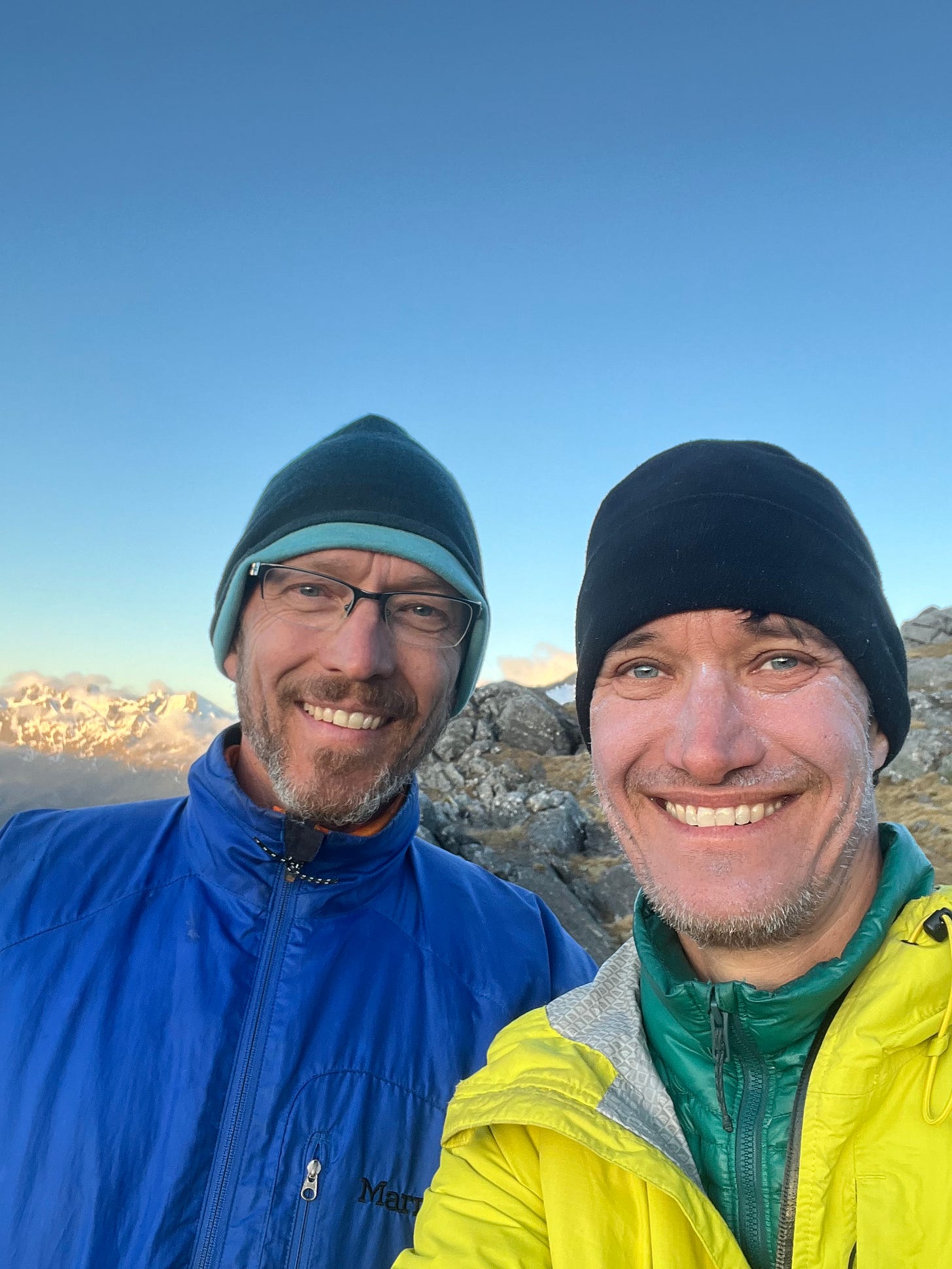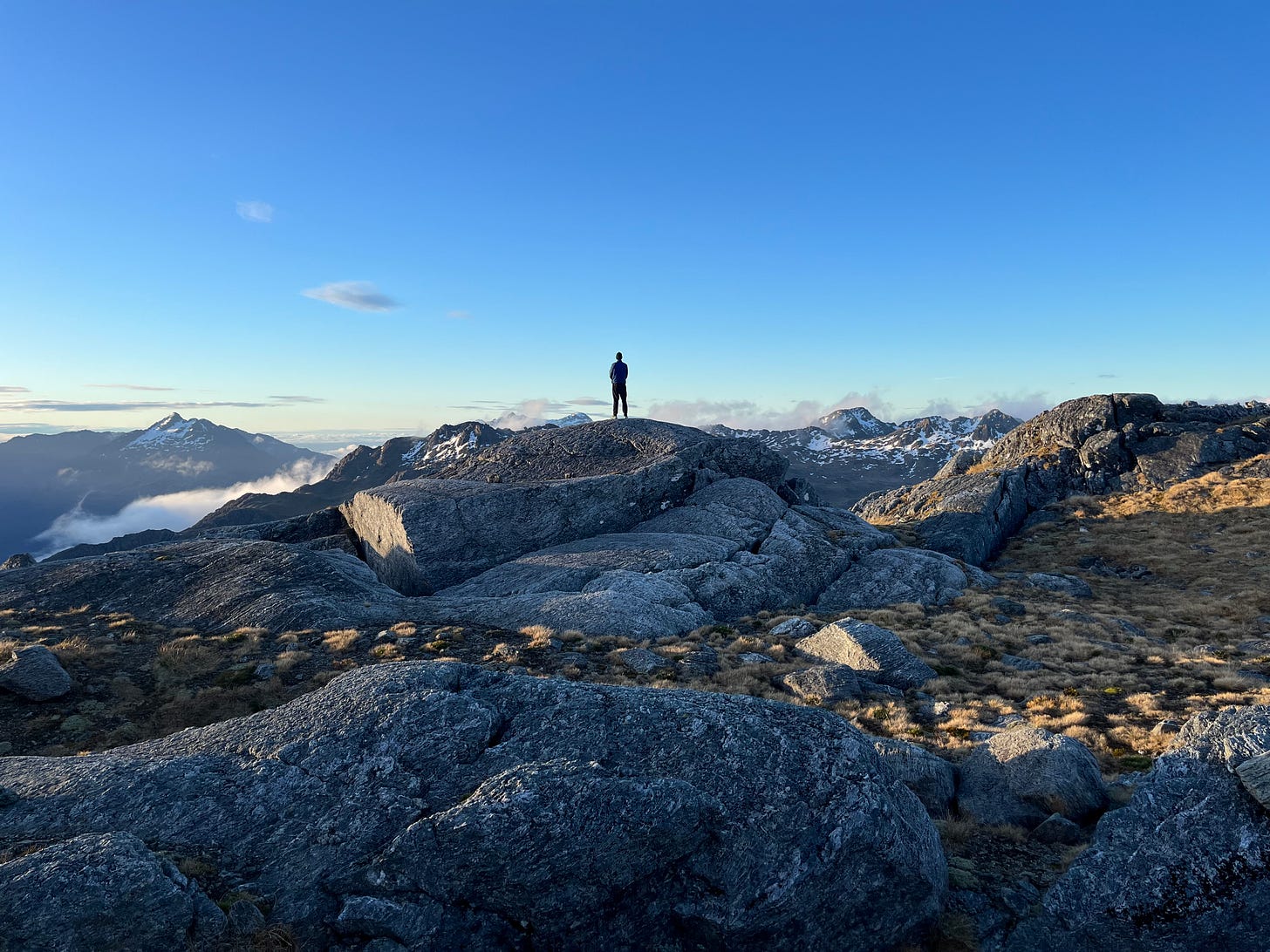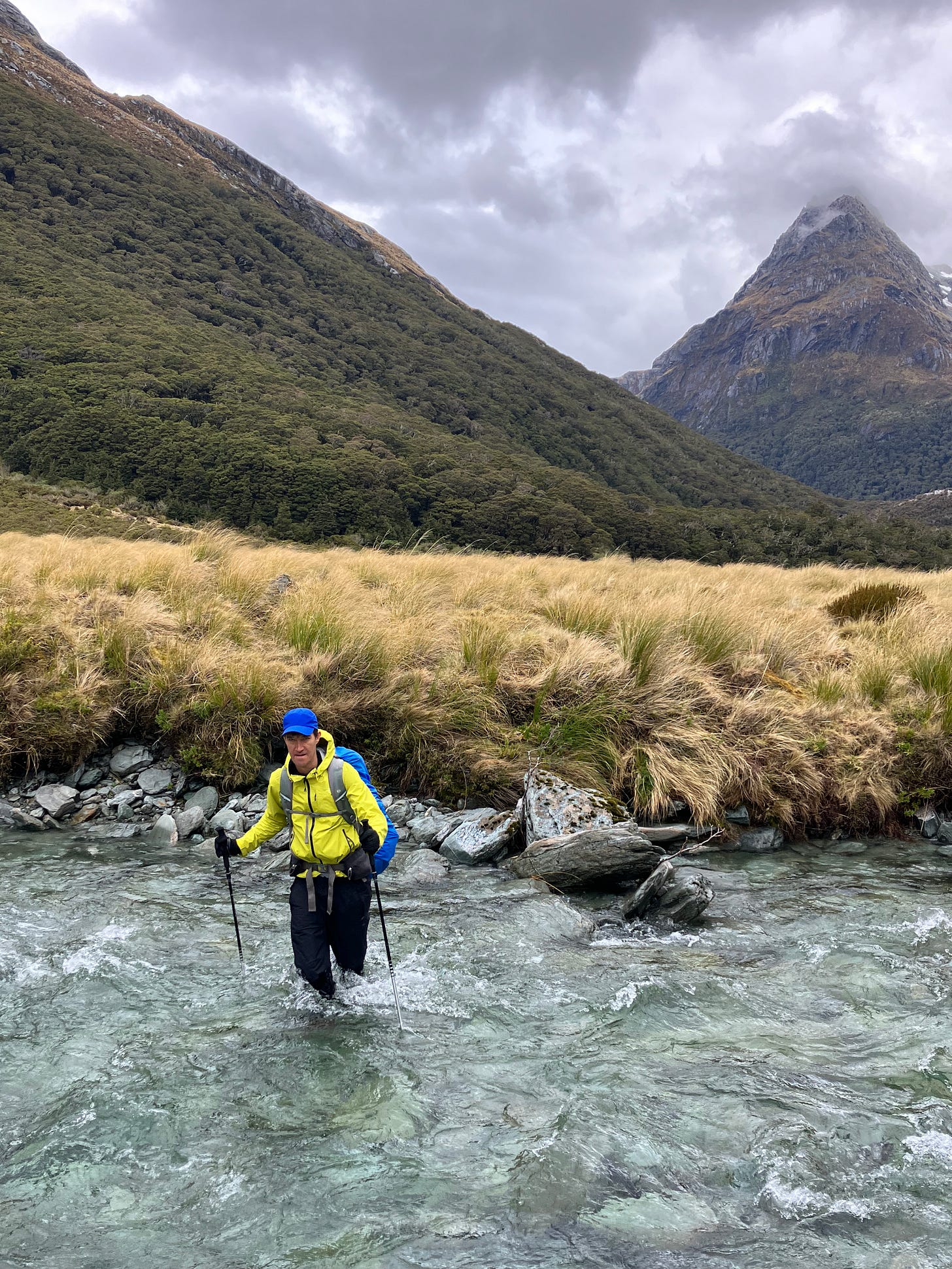Five Passes Tramp in Mt Aspiring National Park
Attempt this rugged tramp at your own risk...it's not for the faint of heart!!!
With a spur-of-the-moment visit from one of my best friends from the US, I wanted to show him some of New Zealand’s most spectacular scenery so I planned a 10 day trip to Queenstown with a couple trips in mind. We started off with a ‘warmup’ trip of tramping the Rees-Dart track in three days, which most people do in four days. It was a fun trip and a nice introduction for Paul to NZ backcountry huts which provided us with much needed shelter particularly on our first day in which we had steady rain all day. The main attraction, however, was the Five Passes backcountry route which is in Mt Aspiring National Park and also includes a short segment in Fiordland National Park. If you’re considering doing this trip, I highly recommend reading this route guide from the Otago Tramping and Mountaineering Club. I also found this Entranced By Wilderness blog post to be a useful resource.
Paul and I on Cloud Nine as we enjoy the view from our campsite near Fahn Saddle.
The Five Passes Tramp seems to be a well known ‘classic’ Kiwi tramp, although I don’t know anyone who has even attempted it. It is comprised of what the New Zealand Department of Conservation (DOC) calls tramping tracks, tramping routes and simply cross country routes. Tramping tracks are described by DOC as advanced routes for people with ‘moderate to high level backcountry skills and experience, navigation and survival skills’. Tramping routes are described by DOC as expert routes consisting of ‘unformed tracks which may be rough, muddy or very steep’ and they note the need for ‘complete self sufficiency’ for users. Paul and I have both been backpacking for more than 30 years and have extensive experience navigating and traveling in rugged backcountry environments so we felt well-equipped and qualified for tackling what we expected to be challenging conditions. The Five Passes Tramp did NOT disappoint and we both thought it was among the hardest trips we have ever done.
Paul on top of the world admiring his kingdom from our campsite near Fahn Saddle.
The Five Passes Tramp starts at the Routeburn Track trailhead which is rather ironic considering the Routeburn is one of New Zealand’s Great Walks attracting thousands of trampers each year whereas Five Passes probably struggles to attract more than 30 trampers a year. Within 10 minutes of walking, the Five Passes route departs from the well-traveled Routeburn Track and the relentless climbing begins up to Sugarloaf Pass. We saw a couple descending down from the pass as we ascended and they would turn out to be the last people that we would see for the next five days! Sugarloaf Pass, which we would have to climb in both directions (yes, it should be called Six Passes!), provides great views of the Rock Burn, Mt Earnslaw and the Dart Valley.
On a sunny day, it’s hard to beat the view of Mt Earnslaw and the Rock Burn from Sugarloaf Pass.
We camped our first night in an enormous expanse of tussocks called Theatre Flat which provided some impressive views of towering peaks on both sides of the valley. We received significant rain our first night and some of our gear got fairly wet unfortunately. The heavy rain resulted in hundreds of impressive waterfalls which seemed to ooze from the mountains in every direction we looked. The next day we made it over our second pass of the trip, Park Pass, and this is where the adventure truly began. We weren’t positive of the ideal route down from the pass to Hidden Falls Creek but did our best to find a suitable route. Before long, we found ourselves in a dense, steep forest of wet ferns, snow grass and rotting trees falling and sliding down the slopes. I found this terrain to be super sketchy so decided to retrace our steps to find a better route down to the river while Paul continued down through the treachery. After some searching and using the GPX file which I had loaded on my Garmin watch, I found a ‘tramping route’ down the steep slope which provided a much improved route down to the river. Throughout the trip, we really struggled with the route finding and incessant ‘bush bashing’ of making our way through thick, mature forested areas or massive ferns, tussocks or snow grass in which we often couldn’t even see where we were stepping - is it solid ground, a raging river or a four foot drop? Once making it to Hidden Falls Creek, Paul and I had some difficulty reconnecting but we found each other just before setting up camp for the night.
Keeping your feet dry is a futile effort as the river crossings are plentiful and can be somewhat challenging.
Our third day was a big one as it had us tackling the remaining three passes, including Cow Saddle, Fiery Col and Fahn Saddle. Cow Saddle was quite easy but the southern facing climb up to Fiery Col had us strap on our crampons and micro-spikes as it was a fairly steep snow field that we did not want to tumble down. We had opted to leave our ice axes behind and it turned out to be a fine decision as we were comfortable using hiking poles for balance (and potential self arrest, if necessary). We had a big descent from Fiery Col before starting the climb up to Fahn Saddle so we were quite tired once we made camp on a bench just below the saddle. The view from this campsite was nothing but snow-capped mountains, massive glaciers and river valleys - so not bad, if that’s your thing! We shared the site with a mischievous Kea (high alpine NZ parrot) who we thought might have stolen our camp pot before finding it stashed away on a ledge.
In mid-November, there was still a decent amount of snow on the southern facing slope of Fiery Col.
After making it over Fahn Saddle early on our fourth day, we thought all of the adventure was likely over with a couple chill days hiking down the Bean Burn to finish out the trip. We had a similar experience on the Fahn Saddle descent as we did on Park Pass where I was uncomfortable with a steep section and decided to back track to find a more gradual, mellow route down to the river while Paul forged on without me. This time we struggled to find each other down at the river and ended up camping separately overnight. I was carrying the tent (although Paul had one of the tent poles) so I was able to sleep in the tent after fashioning a pole out of a stick. I also had the stove so was able to boil water using my metal water bottle (Paul had the pot) for hot meals. Paul was similarly creative and spent the night sleeping in his pack liner which worked well to keep him dry and warm but didn’t keep all of the sandflies away! Without a stove, he experimented and learned that freeze dried meals still taste pretty good using cold water. We fortunately reunited the next morning and vowed to chain ourselves together for the rest of the trip!
Looking up at Mt Earnslaw and the Dart River from the final river crossing of the Rock Burn.
The trip concluded with one more night of camping at a magnificent spot with a shelter and a toilet (pure luxury!) at the confluence of the Rock Burn and the Dart River. On our final day, we hiked up the Rock Burn and made our way back over Sugarloaf Pass before the big descent back down to the Routeburn. It was a truly epic trip through some very rugged New Zealand backcountry that we will never forget. It had some very low ‘lows’ (descents from both Park Pass and Fahn Saddle, endless bush bashing, challenging route finding and getting separated twice) and some unbelievable highs (view from Fahn Saddle campsite, Rock Burn/Dart River campsite and incredible scenery throughout) but we’re hoping that the lows will become a distant memory and only remember the highs as time goes by. If you think you’re up for the challenge and are prepared for some difficult tramping at times, I would definitely recommend the Five Passes Tramp as a trip that you’ll never forget!







